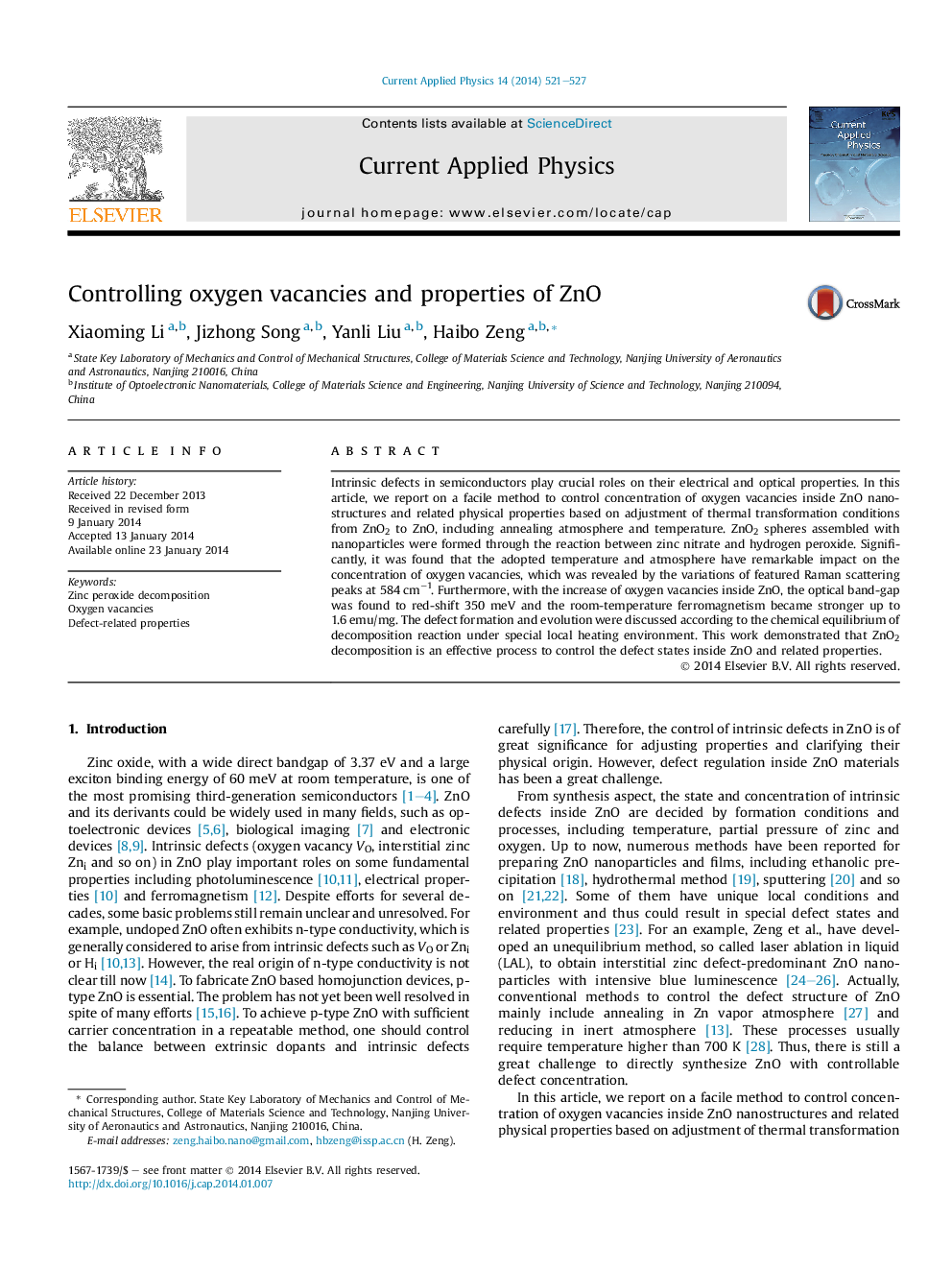| Article ID | Journal | Published Year | Pages | File Type |
|---|---|---|---|---|
| 1786269 | Current Applied Physics | 2014 | 7 Pages |
•A method to control oxygen vacancy concentration inside ZnO is developed.•Room-temperature ferromagnetism as high as 1.6 emu/mg is observed.•The optical band-gap red-shift 350 meV with the increase of oxygen vacancies.•Hollow nanospheres assembled by small nanoparticles are prepared.
Intrinsic defects in semiconductors play crucial roles on their electrical and optical properties. In this article, we report on a facile method to control concentration of oxygen vacancies inside ZnO nanostructures and related physical properties based on adjustment of thermal transformation conditions from ZnO2 to ZnO, including annealing atmosphere and temperature. ZnO2 spheres assembled with nanoparticles were formed through the reaction between zinc nitrate and hydrogen peroxide. Significantly, it was found that the adopted temperature and atmosphere have remarkable impact on the concentration of oxygen vacancies, which was revealed by the variations of featured Raman scattering peaks at 584 cm−1. Furthermore, with the increase of oxygen vacancies inside ZnO, the optical band-gap was found to red-shift 350 meV and the room-temperature ferromagnetism became stronger up to 1.6 emu/mg. The defect formation and evolution were discussed according to the chemical equilibrium of decomposition reaction under special local heating environment. This work demonstrated that ZnO2 decomposition is an effective process to control the defect states inside ZnO and related properties.
Graphical abstractOne-step facile synthesis of zinc peroxide (ZnO2) nanostructures and their conversion into defect-riched zinc oxide (ZnO) replicas are reported. Assembled and hollow structures within ZnO2 and ZnO are obtained. The reaction and oxygen vacancy defect formation mechanism are discussed in details, confirmed by some defect-related properties.Figure optionsDownload full-size imageDownload as PowerPoint slide
